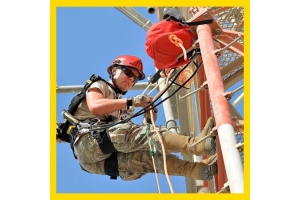Currency
-
June 07, 2017
Flash fires and fuel-fed fires are two different hazards, and it's critical to distinguish between the two for various safety reasons.
The potential exists for flash fires in the oil and gas industry. Flash fires are sudden, intense fires caused by ignition of flammable substances in air.
While flash fires cannot be completely prevented, oil and gas workers can take strategic precautionary steps to give themselves a few seconds of escape if a flash fire occurs. Below are eight critical things that oil and gas workers should know about flash fires, from their cause and duration to adequate personal protective apparel.
1. Flash fires are short and intense.
A flash fire is a rapidly moving flame front that spreads through a diffuse fuel. It goes without saying that workers in the oil and gas industries are at a much higher risk for flash fires, due to the nature of the materials and liquids around which they operate. When a -
June 07, 2017Scott Brueck of NIOSH evaluated the effect of noise on hearing loss at a hammer forge company.
SEATTLE -- Hearing loss was the focus of a Tuesday morning session at AIHce, specifically hearing loss due to noise. As part of the session, Scott Brueck of NIOSH presented his data gathered from evaluating hearing loss at a hammer forge company due to noise.
The study initially started because a local union was concerned about noise exposure at the plant and possible hearing loss in the 100 year-old facility.
Obvious noise at the facility stemmed from the impact of hammer strikes, which was to be expected. Brueck also made note of an impact noise, similar to a gunshot, which was also an issue.
As part of the study, noise was measured in the facility over two days, both by personal noise dosimeters as well as measuring the impulse noise frequency.
The -
June 07, 2017De-energizing equipment does not absolve the facility from the responsibility of performing an arc flash analysis or providing the necessary PPE.
While the threat of shock and electrocution from inadvertent contact with energized parts has long been recognized, the arc flash and arc blast hazards have only fairly recently been incorporated into the electrical safety standards. The Occupational Safety and Health Administration (OSHA) enforces electrical workplace safety standards outlined in the National Fire Protection Association's NFPA 70E: Standard for Electrical Safety in the Workplace.
Basic compliance with NFPA 70E-2015 Edition guidelines can be established with a five-step process:
Step 1: Develop and audit an Electrical Safe Work Practices (ESWP) policy.
Step 2: Conduct an electrical system study to determine the present degree of arc flash hazards and label the equipment.
Step 3: Ensure adequate supplies of personal protective -
June 07, 2017We're better equipped than ever before to provide hand protection to industrial workers. The biggest challenge is making sure regulations and standards around PPE and hand protection keep pace.
Effective workplace hand protection concerns us all. The good news is that technologies, engineering, and materials involved in glove manufacturing change and improve all the time. Testing methods always need to become better calibrated to measuring gloves' protective qualities. While the risks workers face every day continue to be serious, improvements in protection technology are having a positive impact on the workplace, where proper PPE can reduce injuries. We’re better equipped than ever before to provide hand protection to industrial workers. The biggest challenge is making sure regulations and standards around PPE and hand protection keep pace.
The American National Standards









